Related Research Articles

Horemheb, also spelled Horemhab or Haremhab, was the last pharaoh of the 18th Dynasty of Egypt. He ruled for at least 14 years between 1319 BC and 1292 BC. He had no relation to the preceding royal family other than by marriage to Mutnedjmet, who is thought to have been the daughter of his predecessor, Ay; he is believed to have been of common birth.
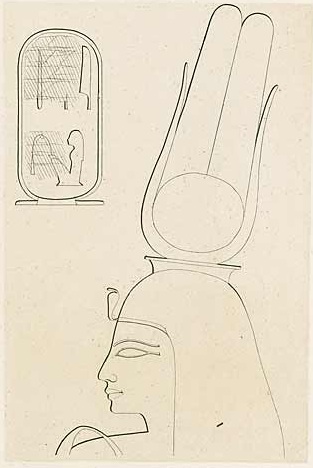
Tey was the Great Royal Wife of Kheperkheprure Ay, who was the penultimate pharaoh of Ancient Egypt's Eighteenth Dynasty. She also had been the wet nurse of Nefertiti.

Sehertawy Intef I was a local nomarch at Thebes during the early First Intermediate Period and the first member of the 11th Dynasty to lay claim to a Horus name. Intef reigned from 4 to 16 years c. 2120 BC or c. 2070 BC during which time he probably waged war with his northern neighbor, the Coptite nomarch Tjauti. Intef was buried in a saff tomb at El-Tarif, known today as Saff el-Dawaba.
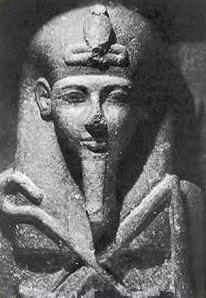
Akhenre Setepenre Siptah or Merneptah Siptah was the penultimate ruler of the Nineteenth Dynasty of Egypt. His father's identity is currently unknown. Both Seti II and Amenmesse have been suggested although the fact that Siptah later changed his royal name or nomen to Merneptah Siptah after his Year 2 suggests rather that his father was Merneptah. If correct, this would make Siptah and Seti II half-brothers since both of them were sons of Merneptah.

Hedjkheperre Setepenre Takelot I was an ancient Libyan ruler who was pharaoh during the Twenty-second Dynasty of Egypt.
Usermontu was an ancient Egyptian vizier from the reign of Tutankhamun to likely the reign of Horemheb, during the 18th Dynasty.
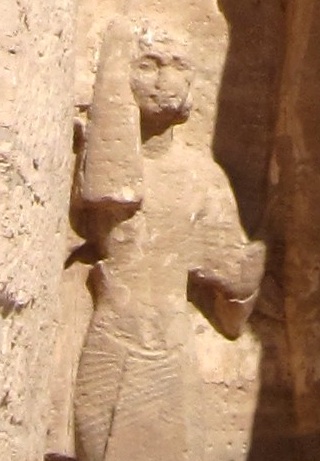
Meryatum was an ancient Egyptian prince and High Priest of Re, the son of Pharaoh Ramesses II and Queen Nefertari.

The High Priest of Amun or First Prophet of Amun was the highest-ranking priest in the priesthood of the ancient Egyptian god Amun. The first high priests of Amun appear in the New Kingdom of Egypt, at the beginning of the Eighteenth Dynasty.
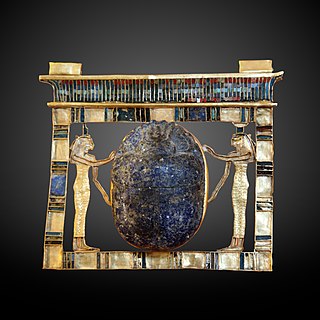
Paser was an ancient Egyptian noble who served as vizier during the reigns of Seti I and Ramesses II in the 19th Dynasty. He would later also become High Priest of Amun.

The Theban Tomb TT31 is located in Sheikh Abd el-Qurna, part of the Theban Necropolis, on the west bank of the Nile, opposite to Luxor. It is the burial place of the ancient Egyptian official, Khonsu, who was First Prophet of Menkheperre, during the 19th Dynasty or 20th Dynasty.
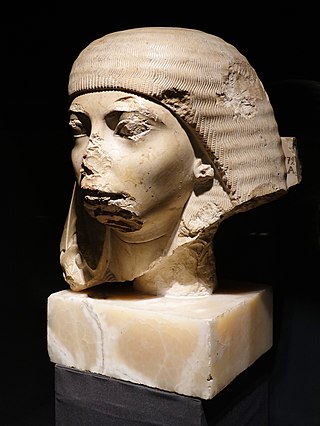
Nakhtmin held the position of generalissimo during the reign of pharaoh Tutankhamun of the Eighteenth Dynasty of Ancient Egypt. His titles during the reign of Tutankhamun included "the true servant who is beneficial to his lord, the king's scribe," "the servant beloved of his lord," "the Fan-bearer on the Right Side of the King," and "the servant who causes to live the name of his lord." These titles were found on five ushabtis that Nakhtmin offered as funerary presents for pharaoh Tutankhamun.
in Ancient Egypt, Paser II was the son of the High Priest of Min and Isis named Minmose. Paser came from a very well-connected family. One uncle was the High Priest of Amun Wennenefer and another uncle was the troop commander of Kush named Pennesuttawy. Through Wennenefer, Paser was related to Amenemone, Amenemope and Hori, the High Priest of Anhur.
Huy was Viceroy of Kush during the reign of Ramesses II. He may have served either before or after Setau. Huy was also Mayor of Tjarw and a royal messenger to the Hatti.
Nebwenenef was High Priest of Amun at the beginning of the reign of Ramesses II during the 19th Dynasty. Prior to that, Nebwenenef had served as High Priest of Anhur and High Priest of Hathor during the reign of Seti I and possibly even earlier.
Parennefer also called Wennefer was a High Priest of Amun during the reigns of Tutankhamun and Horemheb. He was previously thought to date to the time of Ramesses II, but he is now dated to the end of the Eighteenth Dynasty. Parennefer was more firmly put at the end of the Eighteenth Dynasty after extensive excavations of his tomb in Thebes in 1990–1993.
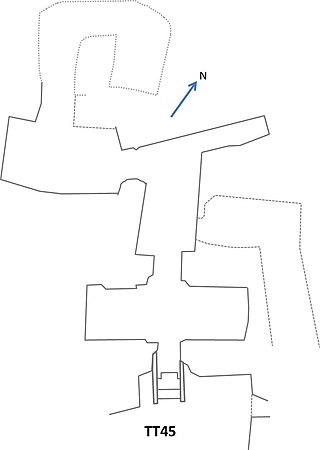
The Theban Tomb TT45 is located in Sheikh Abd el-Qurna, part of the Theban Necropolis, on the west bank of the Nile, opposite modern Luxor. It was originally the burial place of the ancient Egyptian named Djehuty (Thoth), who was a scribe of the offering-table of Mery, high-priest of Amun, head of all the weavers of Amun, and steward of Mery, high priest of Amun. Djehuty lived during the reign of Amenhotep II. He was the son of a lady also named Djehuty.

The Theban Tomb TT156 is located in Dra' Abu el-Naga', part of the Theban Necropolis, on the west bank of the Nile, opposite to Luxor. It is the burial place of the ancient Egyptian Pennesuttawy, who was a troop commander and superintendent of the Southern Desert Lands during the reign of Ramesses II in the Nineteenth Dynasty.
Pennesuttawy was a Military Commander and Superintendent of the Southern Lands (Kush) during the beginning of the Nineteenth Dynasty of Egypt.

The Theban Tomb TT282 is located in Dra' Abu el-Naga', part of the Theban Necropolis, on the west bank of the Nile, opposite to Luxor. It is the burial place of the ancient Egyptian Nakhtmin, also called Nakht, who lived during the reign of Ramesses II of the 19th Dynasty.
Hori was a High Priest of Anhur during the reign of Ramesses II. He was the son of the High Priest of Amun Parennefer called Wennefer and his wife Isis. He may be identical to the High priest of Amun mentioned on the statue of the Overseer of the Charioteers named Kanakht.
References
- ↑ Porter, Bertha and Moss, Rosalind, Topographical Bibliography of Ancient Egyptian Hieroglyphic Texts, Statues, Reliefs and Paintings Volume I: The Theban Necropolis, Part I. Private Tombs, Griffith Institute. 1970, 265 - 266, ASIN: B002WL4ON4
- 1 2 3 4 5 6 Kitchen, K.A., Ramesside Inscriptions, Translated & Annotated, Translations, Volume III, Blackwell Publishers, 1996, pg 78 - 79, 193-195
- 1 2 Labib Habachi. Miscellanea on Viceroys of Kush and their Assistants Buried in Draʿ Abu El-Naga', South. Journal of the American Research Center in Egypt, Vol. 13 (1976), pp. 113-116, Stable URL: JSTOR